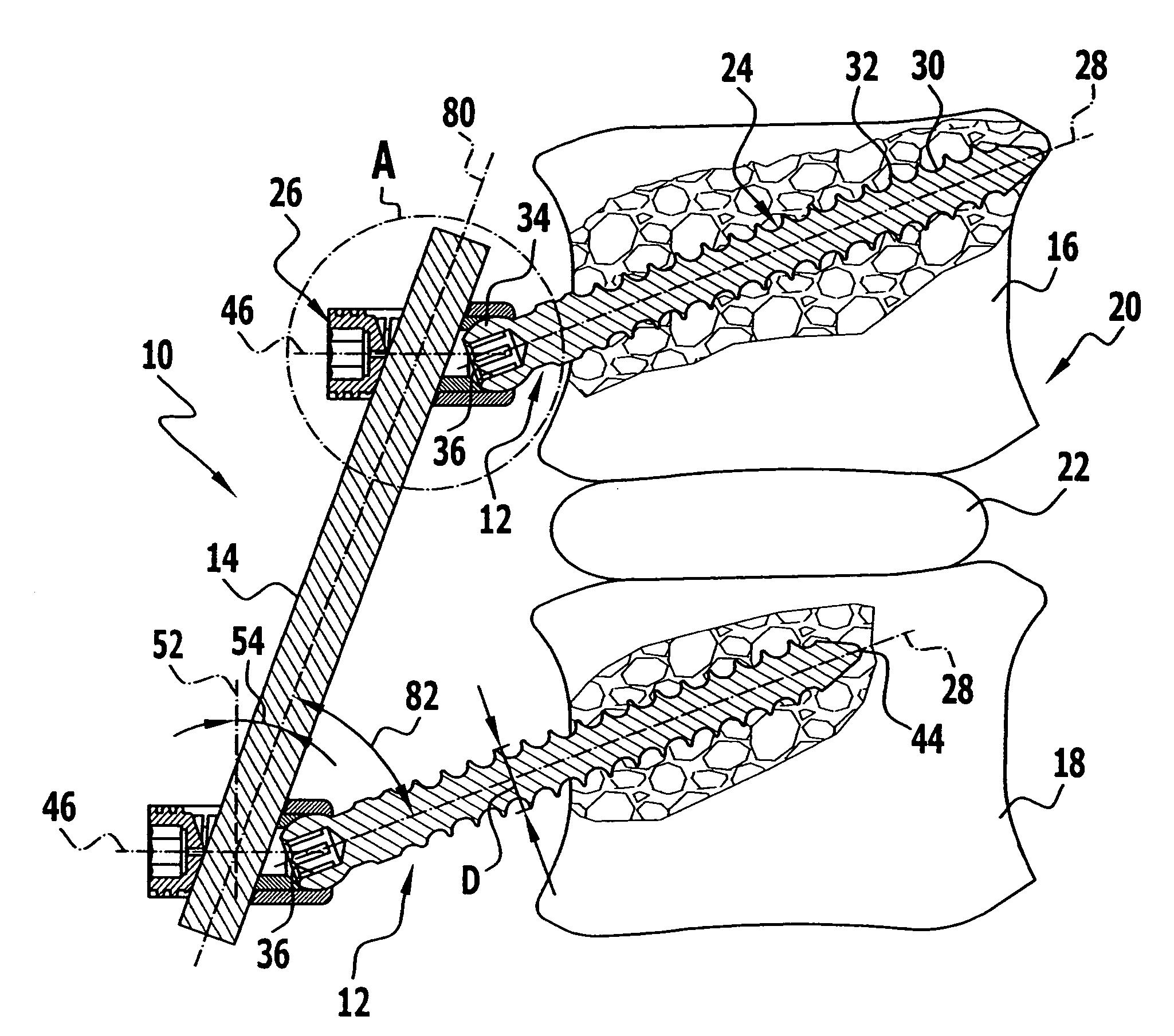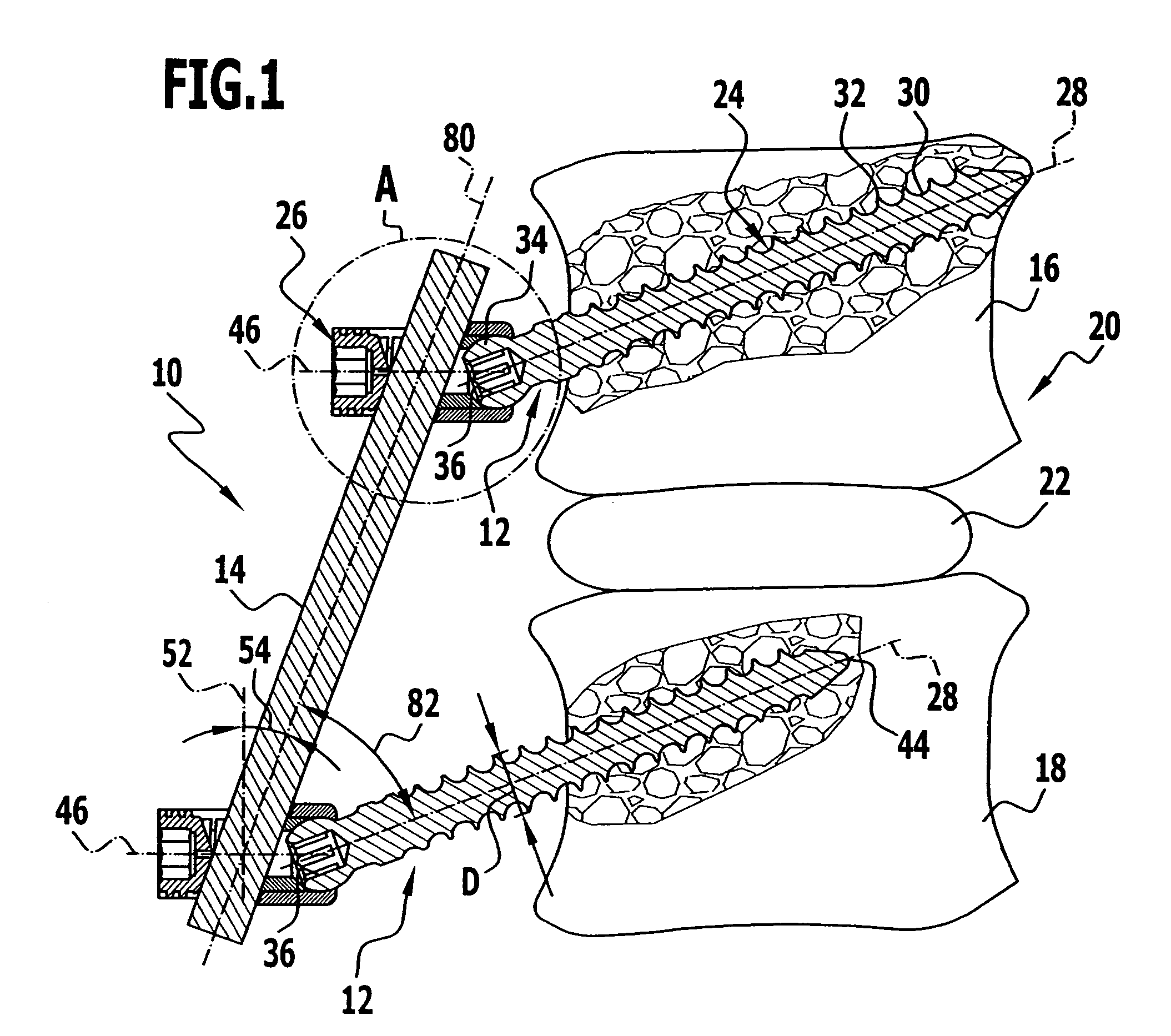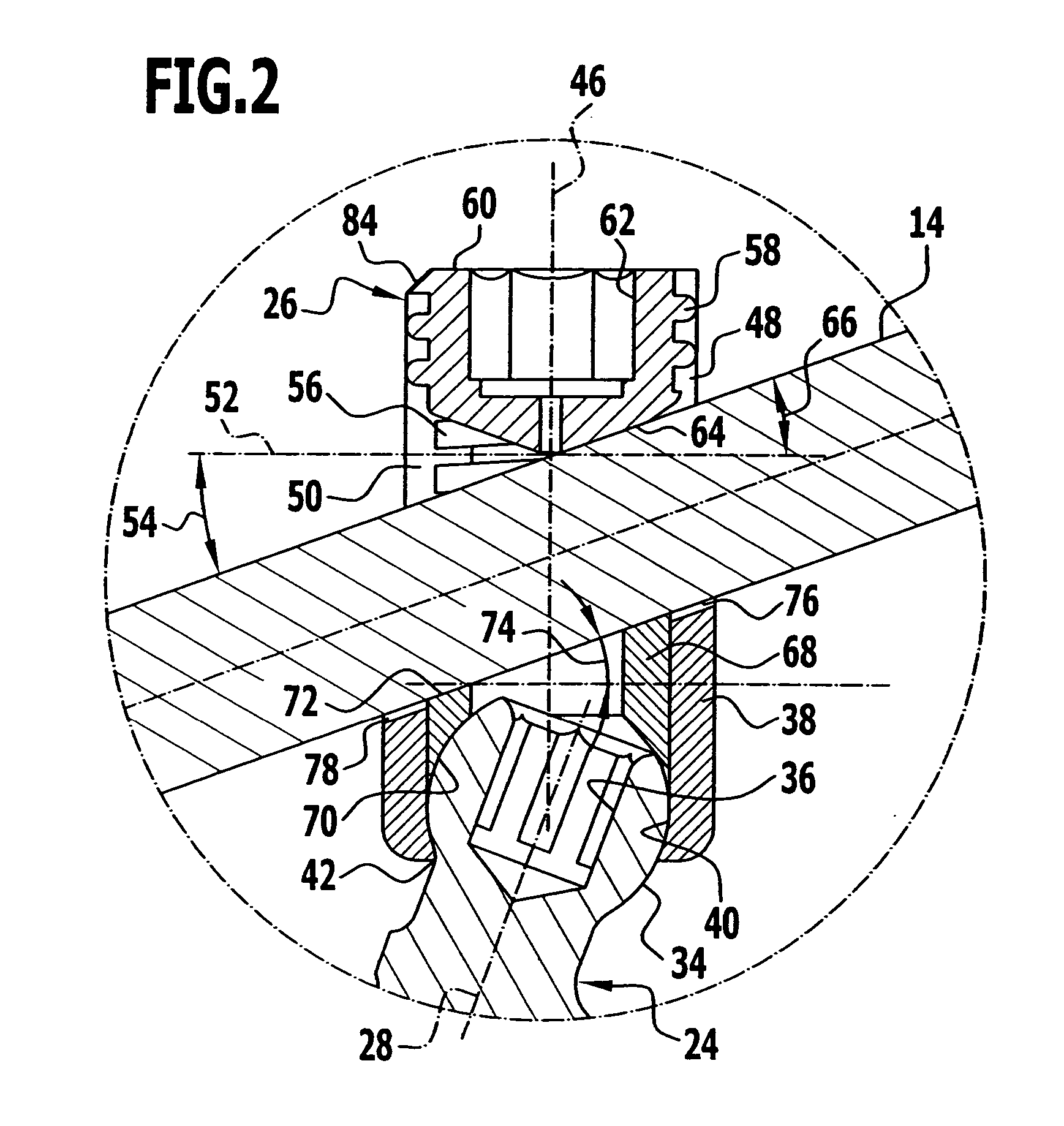Implant system and fastening element for an implant system
a technology of fastening element and implant system, which is applied in the field of fastening element for implant system, can solve the problems of limited pivot angle on all sides and extreme care in the way, and achieve the effects of improving clamping, simple manufacturing, and good support of connecting element on the receiving par
- Summary
- Abstract
- Description
- Claims
- Application Information
AI Technical Summary
Benefits of technology
Problems solved by technology
Method used
Image
Examples
Embodiment Construction
[0046] In FIG. 1 an implant system according to the invention provided as a whole with the reference character 10 is illustrated by way of example. In the illustrated embodiment, the implant system comprises two identical fastening elements in the form of polyaxial bone screws 12 as well as a connecting element in the form of a rod 14. By means of the implant system 10 two adjacent vertebrae 16 and 18 of a human or animal vertebral column 20 may be fixed relative to one another. Particularly in the case of damaged cervical vertebrae 16 and / or 18 or a damaged intervertebral disk 22 between them, the implant system 10 may be inserted dorsally for stabilization. The implant system 10 therefore forms a stabilizing system for the vertebral column.
[0047] There now follows a detailed description of the construction of the implant system 10.
[0048] The rod 14 is elongate and has a circular cross section. It would also be conceivable to use an inwardly curved, non-rectilinearly extending ro...
PUM
 Login to View More
Login to View More Abstract
Description
Claims
Application Information
 Login to View More
Login to View More - R&D
- Intellectual Property
- Life Sciences
- Materials
- Tech Scout
- Unparalleled Data Quality
- Higher Quality Content
- 60% Fewer Hallucinations
Browse by: Latest US Patents, China's latest patents, Technical Efficacy Thesaurus, Application Domain, Technology Topic, Popular Technical Reports.
© 2025 PatSnap. All rights reserved.Legal|Privacy policy|Modern Slavery Act Transparency Statement|Sitemap|About US| Contact US: help@patsnap.com



